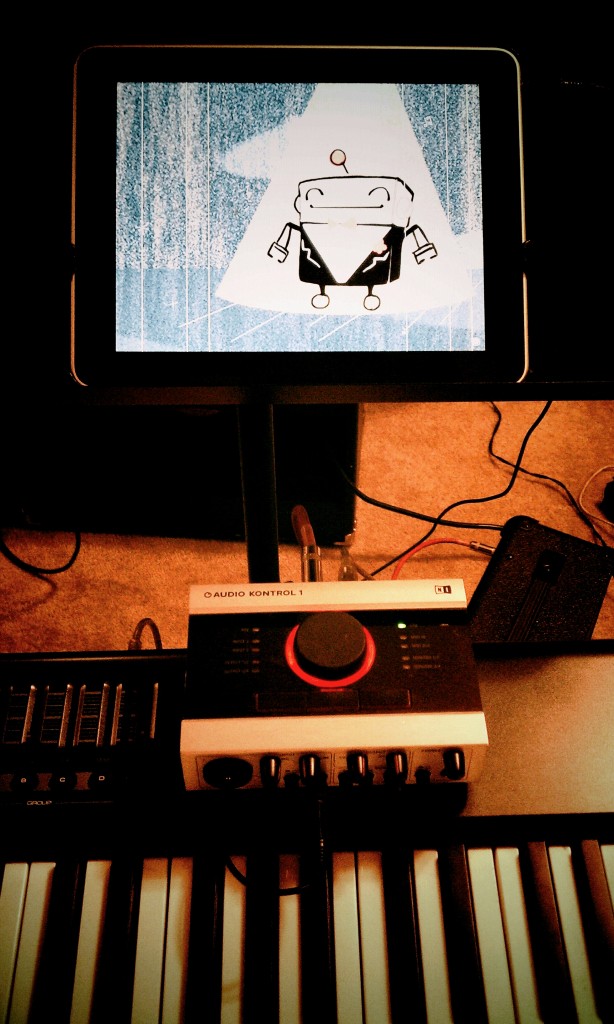If you checked out my last post, you may have noticed a Nintendo DS Lite (running Korg’s DS-10 synth program) as part of my bedroom “studio”. If you looked even closer, you might have noticed the iPod Touch (running Mrmr OSC controller) as well. These aren’t just novelty music items; they serve unique aural or control purposes while providing an interesting way to interface with making music. I haven’t used either of these live yet, but I did use another device recently running a fantastic app.
For our recent Animation on Display performance, I utilized an iPad to play the main synth line of the Read or Die Theme. The app I used goes by the name of Bebot: a touchscreen synthesizer that has some built-in customizable effects. Playing Bebot is as simple as tapping your finger on the display for short synth stabs, or dragging it across to create synth “smears”; there’s no wrong way to create audio with it. As you play, the little robot on screen “sings” the notes. Everyone enjoyed watching the little guy sing his heart out during rehearsals.
You may be saying, “…but Stephen, why use an iPad? You have a keyboard in front of you!”
The Read or Die main synth line consists of only four notes, and these notes have a “sliding” effect between them, meaning they quickly rise or fall in pitch in between each note played. This is something that could have been programmed in a software synth (and played rather stoically on a keyboard), but using your finger to control the actual pitch was something that was more dynamic and exciting to me. I dialed in the appropriate octave range in Bebot and crafted a synth sound that was similar to the Read or Die album version, but also had a slight 8-bit sound to it as well. It brings new meaning to actually “feeling” the music.
It might be common notion to view things like the iPad and the Nintendo DS as “gimmicky” in terms of audio. While there are certainly some out there that fall into a gimmick category (I’m looking at you, musical fart developers), there are fantastic applications such as Bebot for the iPad/iPhone/iPod Touch and Korg’s DS-10 for the Nintendo DS that, I believe, create and encourage more possibilities in terms of audio production and performance.
Bonus Round: Korg not only emulated their MS-10 synthesizer for the Nintendo DS, but also its follow-up, the MS-20 synthesizer, for the iPad (the iMS-20). It rocks as well, and may find its way into the live environment if the shoe fits.









